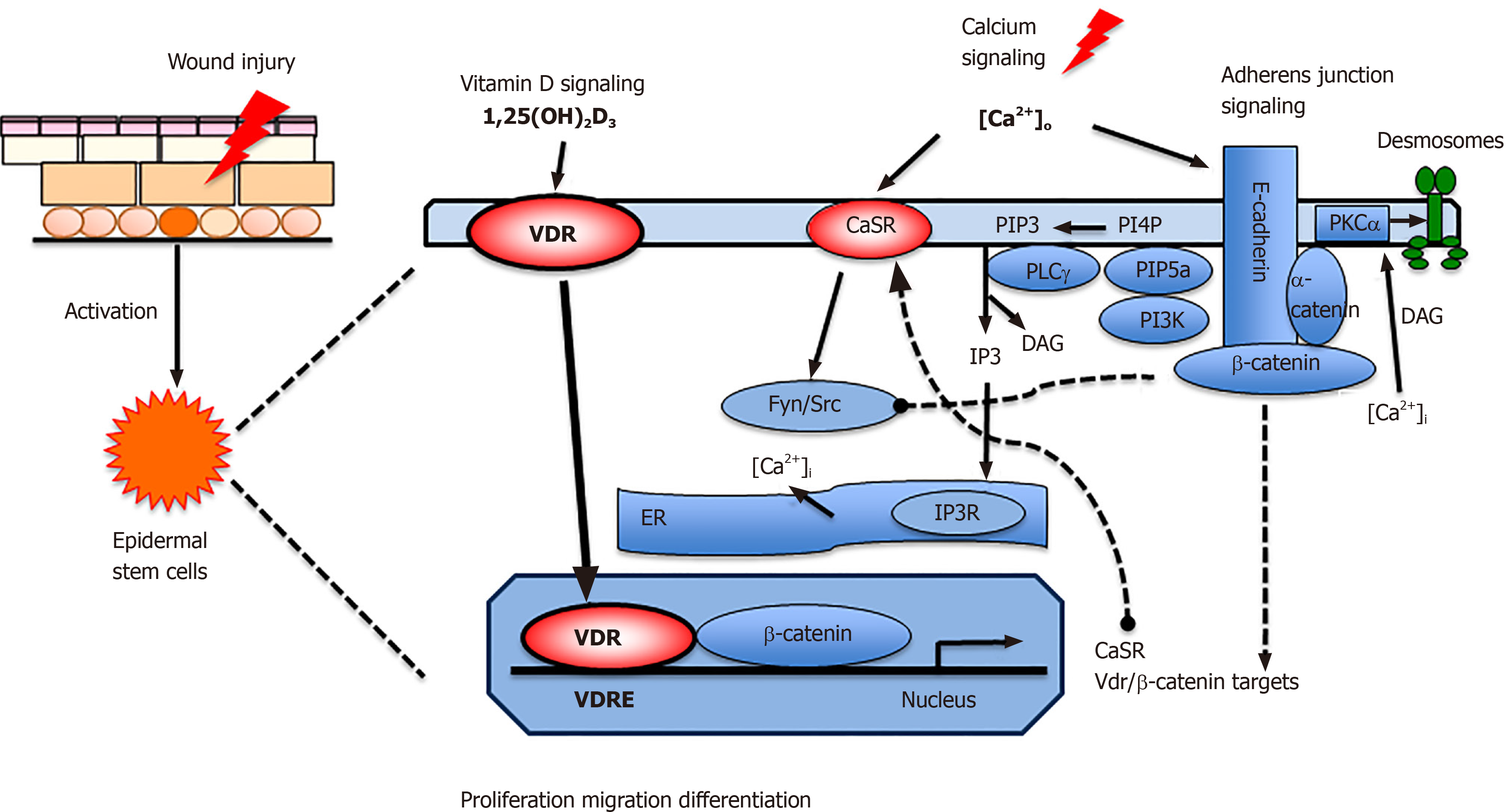Copyright
©The Author(s) 2020.
World J Stem Cells. Jul 26, 2020; 12(7): 604-611
Published online Jul 26, 2020. doi: 10.4252/wjsc.v12.i7.604
Published online Jul 26, 2020. doi: 10.4252/wjsc.v12.i7.604
Figure 2 Proposed model in which vitamin D and calcium signaling mutually regulate β-catenin and AJ signaling essential for wound re-epithelialization.
First, vitamin D receptor (VDR) may partner with β-catenin in the nucleus to regulate the expression of β-catenin target genes such as Cyclin D1 to promote proliferation of stem cells when the skin is wounded. Subsequently extracellular calcium [Ca]o in collaboration with VDR stimulates E-cadherin/catenin complex formation to promote keratinocyte differentiation while reducing the proliferative stimulus by sequestering β-catenin in the membrane. The E-cadherin/catenin complex formation is facilitated by the activation of Fyn/Src kinases by the CaSR which phosphorylate the catenins required for their recruitment into the E-cadherin/catenin complex. The E-cadherin/catenin complex not only provides a reservoir of β-catenin in the membrane but also includes a link to the cytoskeleton via a catenin enabling cell migration and differentiation essential for epidermal remodeling during wound re-epithelialization. Moreover, enzymes within the E-cadherin/catenin complex sequentially phosphorylate PIP to PIP3, that activates PLCγ, that in turn hydrolyzes PIP2 to DAG and IP3. The latter stimulates the IP3 receptor in subcellular organelles (ER and Golgi in keratinocytes) to release calcium. DAG, on the other hand along with calcium activates PKCa, the enzyme that activates the AP-1 transcription factors involved in the expression of differentiation markers in keratinocytes as well as phosphorylation of desmoplakin, which alters the desmosomal structure facilitating migration of the keratinocytes to re-epithelialize the wounds. VDR: Vitamin D receptor; CaSR: Calcium sensing receptor; DAG: Diacylglycerol;ER: Endoplasmic reticulum; PLCγ: Phospholipase γ; IP3: Inositol trisphosphate; PIP3: Phosphatidylinositol 3,4,5-trisphosphate; PI3K: Phosphatidyl inositol 3 kinase; PIP5K1a: phosphatidyl inositol 4-phosphate 5-kinase 1α.
- Citation: Oda Y, Bikle DD. Vitamin D and calcium signaling in epidermal stem cells and their regeneration. World J Stem Cells 2020; 12(7): 604-611
- URL: https://www.wjgnet.com/1948-0210/full/v12/i7/604.htm
- DOI: https://dx.doi.org/10.4252/wjsc.v12.i7.604









